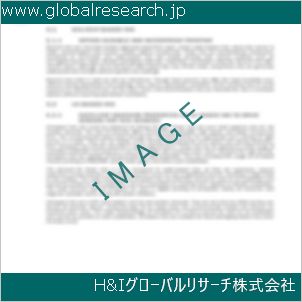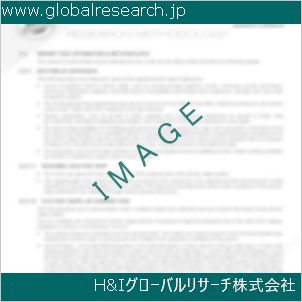Table of Contents
1 Industry Overview of Ethylacetylene
1.1 Definition and Specifications of Ethylacetylene
1.1.1 Definition of Ethylacetylene
1.1.2 Specifications of Ethylacetylene
1.2 Classification of Ethylacetylene
1.3 Applications of Ethylacetylene
1.3.1 Nuclear Application
1.3.2 Non-Nuclear Application
1.4 Industry Chain Structure of Ethylacetylene
1.5 Industry Overview and Major Regions Status of Ethylacetylene
1.5.1 Industry Overview of Ethylacetylene
1.5.2 Global Major Regions Status of Ethylacetylene
1.6 Industry Policy Analysis of Ethylacetylene
1.7 Industry News Analysis of Ethylacetylene
2 Manufacturing Cost Structure Analysis of Ethylacetylene
2.1 Raw Material Suppliers and Price Analysis of Ethylacetylene
2.2 Equipment Suppliers and Price Analysis of Ethylacetylene
2.3 Labor Cost Analysis of Ethylacetylene
2.4 Other Costs Analysis of Ethylacetylene
2.5 Manufacturing Cost Structure Analysis of Ethylacetylene
2.6 Manufacturing Process Analysis of Ethylacetylene
3 Technical Data and Manufacturing Plants Analysis of Ethylacetylene
3.1 Capacity and Commercial Production Date of Global Ethylacetylene Major Manufacturers in 2023
3.2 Manufacturing Plants Distribution of Global Ethylacetylene Major Manufacturers in 2023
3.3 R&D Status and Technology Source of Global Ethylacetylene Major Manufacturers in 2023
3.4 Raw Materials Sources Analysis of Global Ethylacetylene Major Manufacturers in 2023
4 Capacity, Production and Revenue Analysis of Ethylacetylene by Regions, Types and Manufacturers
4.1 Global Capacity, Production and Revenue of Ethylacetylene by Regions 2019-2024
4.2 Global and Major Regions Capacity, Production, Revenue and Growth Rate of Ethylacetylene 2019-2024
4.3 Global Capacity, Production and Revenue of Ethylacetylene by Types 2019-2024
4.4 Global Capacity, Production and Revenue of Ethylacetylene by Manufacturers 2019-2024
5 Price, Cost, Gross and Gross Margin Analysis of Ethylacetylene by Regions, Types and Manufacturers
5.1 Price, Cost, Gross and Gross Margin Analysis of Ethylacetylene by Regions 2019-2024
5.2 Price, Cost, Gross and Gross Margin Analysis of Ethylacetylene by Types 2019-2024
5.3 Price, Cost, Gross and Gross Margin Analysis of Ethylacetylene by Manufacturers 2019-2024
6 Consumption Volume, Consumption Value and Sale Price Analysis of Ethylacetylene by Regions, Types and Applications
6.1 Global Consumption Volume and Consumption Value of Ethylacetylene by Regions 2019-2024
6.2 Global and Major Regions Consumption Volume, Consumption Value and Growth Rate of Ethylacetylene 2019-2024
6.3 Global Consumption Volume and Consumption Value of Ethylacetylene by Types 2019-2024
6.4 Global Consumption Volume and Consumption Value of Ethylacetylene by Applications 2019-2024
6.5 Sale Price of Ethylacetylene by Regions 2019-2024
6.6 Sale Price of Ethylacetylene by Types 2019-2024
6.7 Sale Price of Ethylacetylene by Applications 2019-2024
6.8 Market Share Analysis of Ethylacetylene by Different Sale Price Levels
7 Supply, Import, Export and Consumption Analysis of Ethylacetylene
7.1 Supply, Consumption and Gap of Ethylacetylene 2019-2024
7.2 Global Capacity, Production, Price, Cost, Revenue, Supply, Import, Export and Consumption of Ethylacetylene 2019-2024
7.3 USA Capacity, Production, Price, Cost, Revenue, Supply, Import, Export and Consumption of Ethylacetylene 2019-2024
7.4 EU Capacity, Production, Price, Cost, Revenue, Supply, Import, Export and Consumption of Ethylacetylene 2019-2024
7.5 China Capacity, Production, Price, Cost, Revenue, Supply, Import, Export and Consumption of Ethylacetylene 2019-2024
7.6 Japan Capacity, Production, Price, Cost, Revenue, Supply, Import, Export and Consumption of Ethylacetylene 2019-2024
8 Major Manufacturers Analysis of Ethylacetylene
8.1 Manufacturer One
8.1.1 Company Profile
8.1.2 Product Picture and Specifications
8.1.2.1 Type I
8.1.2.2 Type II
8.1.2.3 Type III
8.1.3 Capacity, Production, Price, Cost, Gross and Revenue
8.1.4 Contact Information
8.2 Manufacturer Two
8.2.1 Company Profile
8.2.2 Product Picture and Specifications
8.2.2.1 Type I
8.2.2.2 Type II
8.2.2.3 Type III
8.2.3 Capacity, Production, Price, Cost, Gross and Revenue
8.2.4 Contact Information
8.3 Manufacturer Three
8.3.1 Company Profile
8.3.2 Product Picture and Specifications
8.3.2.1 Type I
8.3.2.2 Type II
8.3.2.3 Type III
8.3.3 Capacity, Production, Price, Cost, Gross and Revenue
8.3.4 Contact Information
8.4 Manufacturer Four
8.4.1 Company Profile
8.4.2 Product Picture and Specifications
8.4.2.1 Type I
8.4.2.2 Type II
8.4.2.3 Type III
8.4.3 Capacity, Production, Price, Cost, Gross and Revenue
8.4.4 Contact Information
8.5 Manufacturer Five
8.5.1 Company Profile
8.5.2 Product Picture and Specifications
8.5.2.1 Type I
8.5.2.2 Type II
8.5.2.3 Type III
8.5.3 Capacity, Production, Price, Cost, Gross and Revenue
8.5.4 Contact Information
…
9 Marketing Trader or Distributor Analysis of Ethylacetylene
9.1 Marketing Channels Status of Ethylacetylene
9.2 Traders or Distributors with Contact Information of Ethylacetylene by Regions
9.3 Ex-work Price, Channel Price and End Buyer Price Analysis of Ethylacetylene
9.4 Regional Import, Export and Trade Analysis of Ethylacetylene
10 Industry Chain Analysis of Ethylacetylene
10.1 Upstream Major Raw Materials Suppliers Analysis of Ethylacetylene
10.1.1 Major Raw Materials Suppliers with Contact Information Analysis of Ethylacetylene
10.1.2 Major Raw Materials Suppliers with Supply Volume Analysis of Ethylacetylene by Regions
10.2 Upstream Major Equipment Suppliers Analysis of Ethylacetylene
10.2.1 Major Equipment Suppliers with Contact Information Analysis of Ethylacetylene
10.2.2 Major Equipment Suppliers with Product Pictures Analysis of Ethylacetylene by Regions
10.3 Downstream Major Consumers Analysis of Ethylacetylene
10.3.1 Major Consumers with Contact Information Analysis of Ethylacetylene
10.3.2 Major Consumers with Consumption Volume Analysis of Ethylacetylene by Regions
10.4 Supply Chain Relationship Analysis of Ethylacetylene
11 Development Trend of Analysis of Ethylacetylene
11.1 Capacity, Production and Revenue Forecast of Ethylacetylene by Regions and Types
11.1.1 Global Capacity, Production and Revenue of Ethylacetylene by Regions 2024-2029
11.1.2 Global and Major Regions Capacity, Production, Revenue and Growth Rate of Ethylacetylene 2024-2029
11.1.3 Global Capacity, Production and Revenue of Ethylacetylene by Types 2024-2029
11.2 Consumption Volume and Consumption Value Forecast of Ethylacetylene by Regions, Types and Applications
11.2.1 Global Consumption Volume and Consumption Value of Ethylacetylene by Regions 2024-2029
11.2.2 Global and Major Regions Consumption Volume, Consumption Value and Growth Rate of Ethylacetylene 2024-2029
11.2.3 Global Consumption Volume and Consumption Value of Ethylacetylene by Types 2024-2029
11.2.4 Global Consumption Volume and Consumption Value of Ethylacetylene by Applications 2024-2029
11.3 Supply, Import, Export and Consumption Forecast of Ethylacetylene
11.3.1 Supply, Consumption and Gap of Ethylacetylene 2024-2029
11.3.2 Global Capacity, Production, Price, Cost, Revenue, Supply, Import, Export and Consumption of Ethylacetylene 2024-2029
11.3.3 USA Capacity, Production, Price, Cost, Revenue, Supply, Import, Export and Consumption of Ethylacetylene 2024-2029
11.3.4 EU Capacity, Production, Price, Cost, Revenue, Supply, Import, Export and Consumption of Ethylacetylene 2024-2029
11.3.5 China Capacity, Production, Price, Cost, Revenue, Supply, Import, Export and Consumption of Ethylacetylene 2024-2029
11.3.6 Japan Capacity, Production, Price, Cost, Revenue, Supply, Import, Export and Consumption of Ethylacetylene 2024-2029
12 New Project Investment Feasibility Analysis of Ethylacetylene
12.1 New Project SWOT Analysis of Ethylacetylene
12.2 New Project Investment Feasibility Analysis of Ethylacetylene
13 Conclusion of the Global Ethylacetylene (CAS 107-00-6) Industry 2024 Market Research Report
| ※参考情報 エチルアセチレン(Ethylacetylene)は、化学式C4H6を持つ有機化合物であり、アセチレンの誘導体です。CAS登録番号は107-00-6です。エチルアセチレンは特異な構造を有し、高い反応性を持つため、さまざまな用途に利用されています。 エチルアセチレンは、直鎖状の炭素鎖にエチル基が結合した構造を持つアルキンとして分類されます。具体的には、炭素の二重結合を持つアセチレンにエチル基が結合しているため、その反応性はアセチレンと同様の性質を持ちます。このため、非常に不安定な化合物であり、取り扱いには注意が必要です。 エチルアセチレンの製造方法はいくつかありますが、主にアセチレンを化学的に変換することで得られます。具体的には、アセチレンとエチルアルコールを反応させることで、エチルアセチレンを合成できるプロセスが一般的です。また、さまざまな触媒を使用して反応を促進することも可能です。 この化合物の特徴としては、高い反応性があります。エチルアセチレンは脱水素化・水素添加反応において重要な中間体として機能します。この高い反応性は、エチルアセチレンを合成化学や製薬化学において非常に有用にしています。また、エチルアセチレンは様々な官能基と反応しやすく、新しい有機化合物を合成するための基材としても重要です。 用途に関して、エチルアセチレンは主に化学合成の中間体として使用されます。例えば、医薬品や農薬の合成において、複雑な分子構造の構築が求められるケースで非常に有効です。また、合成樹脂やプラスチックの製造においても、重要な役割を果たしています。具体的には、ポリマーの合成や添加剤の開発に利用され、材料の特性を向上させる役割を担います。 さらに、エチルアセチレンは溶媒としての特性も持っており、一部の有機化合物の溶解に使用されることがあります。また、エチルアセチレンを基にした新しい化合物の開発が進められており、これにより新しい材料や効率的な製造プロセスが確立される日が待たれています。 技術的な関連においては、エチルアセチレンを利用した化学反応には様々な手法があります。例えば、エチルアセチレンを基にしたカップリング反応や重合反応が開発されており、これによりより複雑な分子を効率的に合成することが可能です。このような技術の進歩は、化学産業や材料科学の分野において革新的な成果をもたらしています。 また、エチルアセチレンはその特性により触媒反応の研究にも用いられています。触媒を利用することで反応の選択性や収率を向上させることができ、これが新しい化学プロセスの開発に寄与しています。特に、グリーンケミストリーの観点から、環境への負荷を少なくする反応系を設計するための重要な要素となります。 環境への配慮も重要な要素であり、エチルアセチレンの取り扱いや廃棄の際には、その反応性の高さから注意が必要です。適切な管理と取り扱いを行うことによって、その利点を最大限に活用し、環境にも配慮した化学技術の発展が期待されます。 エチルアセチレンは、化学合成の世界において鍵となる役割を果たしています。その高い反応性と多様な用途から、今後も新しい材料や化合物の開発が進むことが予想されます。そして、このような進展はより持続可能な化学プロセスや革新技術の発展に寄与することになります。持続可能な社会を築くためにも、エチルアセチレンを基にした研究や開発がますます重要性を増していくことでしょう。 |
❖ 免責事項 ❖
http://www.globalresearch.jp/disclaimer












